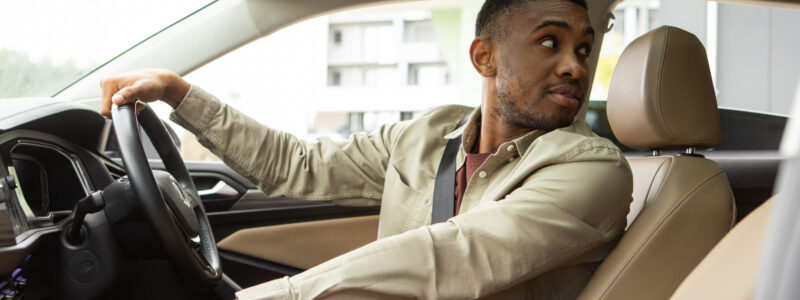Manoeuvres (skills 17 to 20)

17. Reversing
You should be able to reverse smoothly and safely while under complete control. This includes reversing to the left and right around sweeping curves and sharp corners.
You should be confident reversing:
- around a left and a right corner – including square and gently curved corners as well as on the straight
- on a level road
- on a gradient
- on a narrow or wide road
- on a flat road or one with a camber
- on the left and right-hand sides of the road
- into driveways
- into and out of parking spaces
You should also know how to:
- reverse accurately and smoothly
- steer in the correct manner
- make use of effective all-round observation
- reverse without undue delay
- take account of the way the car moves when you’re reversing
18. Turning the car around
To turn your vehicle around, it’s often easiest and safest to use a roundabout or reverse into a side street. If these options are not available, you may need to turn your vehicle around in the road.
You should be able to turn the car around:
- on a flat road and one with a camber
- under full control
- accurately judging the width of the road
- while looking for and responding to other road users
- without running into or mounting either kerb
You should know how to:
- observe carefully all around throughout the manoeuvre, especially checking their blind spots
- respond safely to other road users
- coordinate the hand and foot controls so the car moves smoothly
- steer in the correct manner while turning as tightly as possible
19. Parking
Whether you’re parking at the side of the road or using a bay in a car park, you need to gain the skills to do this safely before you drive on your own.
You should to be able to:
- coordinate your hand and foot controls well, so that the car moves smoothly
- keep a reasonable distance from other vehicles
- observe all around while manoeuvring and not just rely on mirrors
- know where you’re allowed to park so that it’s legal, safe and convenient
- perform this manoeuvre accurately, signalling when they need to
- park without becoming a danger or obstruction to other road users
20. Emergency stop
Effective scanning and reading of the road ahead will cut down the risk of having to make an emergency stop.
But if it’s unavoidable, brake as quickly as possible while keeping the car under full control.
You should know:
- how to coordinate the brake and clutch pedals so that the car comes to a stop under full control
- the limitations of anti-lock braking systems (ABS)
- how different road and weather conditions can affect stopping safely
- how to control a skid if one occurs
- how to move away safely again after you’ve made an emergency stop
Learn more about these skills
Previous page:
Next page:
Not feeling completely prepared?
Only take your driving test if you’re feeling completely prepared.
You can move your driving test back if you’re not feeling quite ready yet.
It’s free to change your appointment time, as long as you do it at least 3 full working days (Mondays to Saturdays) before your test.
